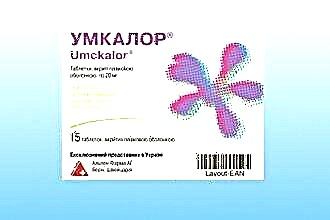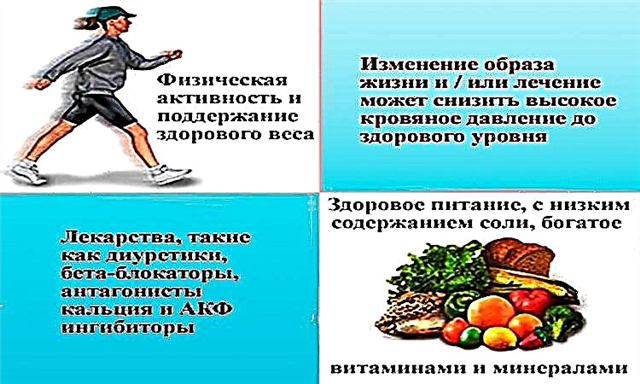 When microbes try to enter the body through the respiratory tract, the tonsils take on the attack and resist infection. If the glands often have to fight with weakened immunity, there may be enlarged glands in the child. Treatment of pathology depends on the reasons for its development, which are being clarified by otolaryngologists.
When microbes try to enter the body through the respiratory tract, the tonsils take on the attack and resist infection. If the glands often have to fight with weakened immunity, there may be enlarged glands in the child. Treatment of pathology depends on the reasons for its development, which are being clarified by otolaryngologists.
The tonsils are composed of lymphoid tissue and belong to the protective structures of the immune system. Their hypertrophy indicates the presence of provoking factors, among which it is worth highlighting:
- frequent SARS;
- the presence of pathogenic microorganisms that support the inflammatory process. This applies to chronic tonsillitis, pharyngitis, sinusitis and even caries;
- low immune defense (various immunodeficiencies);
- improper nutrition, because children love only sweets and pastries, which do not bring benefits to the body;
- poor living conditions (dry, dusty air, mold, cold);
- frequent general hypothermia;
- tendency to allergic reactions.
Note that children whose parents suffered from adenoids or had tonsils removed are more prone to lymphoid tissue hypertrophy.
When examined, enlarged tonsils in a child do not show signs of acute inflammation, that is, there is no swelling and redness. Their consistency can be dense or soft. As for purulent discharge on the surface and purulent plugs in the lacunae, this is usually not there, but it can occur in chronic tonsillitis.
Therapeutic tactics depends on the degree of proliferation of lymphoid tissue. To determine what treatment is necessary in this case, a pharyngoscopy is performed.
There are three degrees of hypertrophy:
- on the first - about 30% of the throat lumen is closed with lymphoid growths. At the same time, the symptoms may not bother, only sometimes the child feels difficulty swallowing solid food, some tickling and discomfort. Parents notice prolonged acute respiratory viral infections with frequent complications in the form of otitis media or tonsillitis. Not having time to recover from a cold, the child may fall ill again after the usual hypothermia or contact with a sick peer;
- for the second, the closure of half of the throat is characteristic, which is already manifested by difficulty in swallowing, choking, snoring and decreased appetite. The child's speech may deteriorate, he pronounces sounds poorly and speaks indistinctly. Children are often sick and recover for a long time;
- in the third degree, only 30% of the free lumen remains, which is clinically manifested by puffing, difficulty swallowing and chewing. The child snores during sleep, nasal breathing becomes difficult, which leads to insufficient oxygen supply to the brain and hypoxia. As a result, the child is lethargic, sleepy, inattentive, capricious and complains of frequent headaches. It is often unclear what the child is saying due to illegible speech. The voice becomes nasal, hearing deteriorates, and the child is almost always in a "sick" state. Chronic inflammation persists in the tonsils, which is why doctors find purulent plugs in the lacunae of the tonsils.
Conservative treatment
As soon as the tonsils begin to enlarge, you need to consult your doctor. Firstly, it is necessary to find out what caused the hypertrophy, and secondly, the doctor must control the dynamics during the treatment.
Medicines are prescribed based on the results of the diagnosis.
If the cause of the swollen glands is a chronic infection, treatment is aimed at fighting germs and strengthening the immune system. To do this, use:
- antibacterial agents for oral administration in the form of a solution or tablet form - Augmentin, Sumamed or Zinnat;
- solutions with antiseptic and anti-inflammatory action for rinsing - Chlorhexidine, Furacilin, Givalex or Miramistin;
- solutions in the form of a spray with antimicrobial and anti-inflammatory action - Tantum Verde, Bioparox, Orasept or Ingalipt;
- antihistamines to reduce tissue swelling - Suprastin, Claritin or Loratadin.
Antibiotics are prescribed only after receiving the results of bacterial culture and antibioticogram.
In the absence of acute inflammation, hypertrophy should be treated with topical drugs with cauterizing as well as astringent effects:
- silver nitrate solution for treating the surface of the tonsils. Usually a 1-2% solution is used;
- Tannin belongs to herbal medicines, it is produced in the form of a solution. It is used to rinse the throat and lubricate enlarged tonsils. Processing should be repeated up to 4 times a day;
- Due to its antiseptic effect, antiformin can be used both to fight microbes and to reduce the volume of tonsils. A 2-5% solution is used for rinsing the throat.
In the treatment, the treatment of tonsils with methylene blue 1%, hydrogen peroxide or iodine-glycerin 0.5% can also be prescribed. To provide a complex therapeutic effect on the body, the appointment of drugs for a systemic effect is shown:
 Umckalor is a homeopathic remedy. It is taken 25 minutes before meals with water. Dosages are calculated based on the age of the child. The duration of the course is 10 days. If, after reducing the tonsils, signs of hypertrophy appear again, it is worth repeating the course, but in lower dosages;
Umckalor is a homeopathic remedy. It is taken 25 minutes before meals with water. Dosages are calculated based on the age of the child. The duration of the course is 10 days. If, after reducing the tonsils, signs of hypertrophy appear again, it is worth repeating the course, but in lower dosages;- Lymphomyosot refers to multicomponent homeopathic medicines that have a healing effect on lymphoid tissue. The action of the remedy is to activate the lymph outflow, increase the immune defense and accelerate the elimination of toxins. The duration of the course and dosages are calculated individually;
- Tonsilogon consists of many medicinal components of plant origin, which makes it possible to have anti-inflammatory, antimicrobial and immunomodulatory effects. You can purchase the drug in the form of a solution or in the form of pills. The duration of the course is 7 days;
- Tonsilotren is a tablet preparation of homeopathic origin. Its action is aimed at reducing lymphoid growths. Reception is allowed from 10 years old.
To supplement the effect of medications, physiotherapeutic procedures can be prescribed, for example, ozone therapy, peloid therapy (applications from mud to the submandibular zone), electrophoresis, and microwave.
Removal of tonsils
Children are terribly afraid of doctors, various manipulations associated with pain, so it is not so easy to tell the child about the upcoming operation. For ENT doctors, tonsillectomy, that is, removal of the tonsils, is considered a simple and daily operation. On average, it lasts no longer than 50 minutes.
When is the operation performed? Indications when surgery is planned include:
- frequent sore throats (5-7 times a year). It means that there is an infection in the tonsils, which, with the slightest decrease in immunity, leads to an exacerbation of angina. As a result, the child does not fully recover. Given that the main cause of angina is streptococcus, the risk of rheumatic fever, polyarthritis, myocardial and kidney damage increases;
- hypertrophy of 2-3 degrees, which is accompanied by shortness of breath, snoring and periods of apnea. This leads to brain hypoxia and dysfunction of internal organs;
- lack of positive results from conservative treatment.
To choose the most suitable method, the otolaryngologist conducts a complete examination of the child (blood tests, ultrasound, pharyngoscopy, rhinoscopy, otoscopy). The operation can be carried out in several ways:
- the classic surgical method, in the process of which a loop, microdebrider and scissors are used;
- laser removal is carried out using a beam for children over 5 years old. The technique allows you to remove hypertrophied tissue and seal damaged blood vessels, preventing bleeding;
- the ultrasonic method makes it possible to destroy altered tissues under the influence of high-frequency waves;
- cryodestruction involves freezing the glands, which also does not lead to bleeding;
- the electric method is used extremely rarely for children.
The operation can be postponed if there are contraindications:
- diabetes in the stage of decompensation;
- exacerbation of chronic diseases;
- acute infections (colds, flu);
- severe coagulopathy;
- decompensation of the work of the cardiovascular and respiratory systems;
- not cured caries.
The choice of pain relief is carried out taking into account the age of the child, his emotional state and the presence of concomitant diseases.
The operation can be performed under local anesthesia, but general anesthesia is required if necessary. To reduce the child's fear and tantrum, parents will have to be with them at all times (before and immediately after surgery).
Hospitalization can last 10 days if the removal was performed by surgery, or several days if using a laser. In the postoperative period, the child remains in the clinic under supervision to eliminate the risk of complications.
Children may complain of a sore throat, analgesic drugs will help with this. The feeling of discomfort can persist for up to two weeks, so you have to endure. Do not be alarmed if, after removing the tonsils, the child produces a lot of saliva mixed with blood.
Two days after the operation, crusts form at the site of the tonsils, which must not be removed.
To reduce the risk of complications, you must follow some rules:
- do not go to the baths, do not sunbathe in the sun;
- do not eat hot food, drinks;
- solid foods, spicy foods are prohibited;
- one should not shout loudly, and on the first day, one should be completely silent.
Complications after tonsillectomy are rare, but it's better to know about them. In the postoperative period, bleeding and infectious complications are possible. As for subfebrile condition, slight weakness and profuse salivation with blood crusts - this is normal for the first 3 days after surgery.
Traditional therapy
You can supplement the treatment with folk medicines for rinsing, ingestion and lubrication of the tonsils: to prepare a solution for rinsing the throat, you can use calendula, sage, St. John's wort, eucalyptus leaves, oak bark and licorice root. The ingredients are used in various combinations to reduce tissue swelling, inflammation and infection; herbal teas with chamomile, calendula, yarrow, currant leaves, raspberries, lime blossom or St. John's wort; tincture of propolis for oral administration (children over 10 years old) or a mixture of propolis with honey and butter; decoction of beets for rinsing.
The most dangerous age for the growth of tonsils is 5-8 years, when children begin to come into contact with the infection more often (in preschool and school educational institutions). At this time, parents should take care of the child's immunity: improve nutrition, hardening, sign up for swimming and do not forget about spa treatment.
For the immunity of children, there is nothing better than good nutrition, healthy sleep, sunbathing and sea procedures.

 Umckalor is a homeopathic remedy. It is taken 25 minutes before meals with water. Dosages are calculated based on the age of the child. The duration of the course is 10 days. If, after reducing the tonsils, signs of hypertrophy appear again, it is worth repeating the course, but in lower dosages;
Umckalor is a homeopathic remedy. It is taken 25 minutes before meals with water. Dosages are calculated based on the age of the child. The duration of the course is 10 days. If, after reducing the tonsils, signs of hypertrophy appear again, it is worth repeating the course, but in lower dosages;

